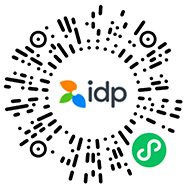- IDP China>
- 课程库>
- 自然科学>
- 自然资源与保护>
- 水,湿地和海洋资源管理>
- Doctor of Philosophy in Water Science and Management - Water Informatics
Doctor of Philosophy in Water Science and Management - Water Informatics

学历文凭
Ph.D.

专业院系
Water Science and Management

开学时间

课程时长

课程学费

国际学生入学条件
IDP—雅思考试联合主办方

雅思考试总分
6.5
了解更多
雅思考试指南
- 雅思总分:6.5
- 托福网考总分:79
- 托福笔试总分:550
- 其他语言考试:Duolingo - overall score 105
CRICOS代码:
申请截止日期: 请与IDP顾问联系以获取详细信息。
课程简介
相关申请
 预科
预科 奖学金
奖学金 实习机会
实习机会 在校学习
在校学习 跨境学习
跨境学习 校园授课-线上开始
校园授课-线上开始 在线/远程学习
在线/远程学习
学校排名

世界排名601
数据源:泰晤士高等教育世界大学排名
关于新墨西哥州立大学

新墨西哥州立大学是一所历史悠久的公立大学,成立于1888年,主校区位于新墨西哥州的拉斯库鲁斯(New Mexico, Las Cruces),是“大陆法案大学”( land-grant university)之一。最早创立时候名为拉斯库鲁斯学院(Las Cruces College), 是一所农业学院。1889年更名为“New Mexico College of Agriculture and Mechanic Arts”。总计有2.64万学生(2005年数据), 师生比是1:19。NMSU所设的学科,包括农科、生物科学、商科管理,大众传播及艺术、计算机及自然科学,教育、工程及环境设计、健康专业、社会科学等。
本校相关课程

机械工程哲学博士
学历文凭
Ph.D.
开学日期
课程费用总额


机械工程理学硕士
学历文凭
Masters Degree
开学日期
课程费用总额


Doctor of Philosophy in Electrical Engineering
学历文凭
Ph.D.
开学日期
课程费用总额


Master of Science in Electrical Engineering
学历文凭
Masters Degree
开学日期
课程费用总额


土木工程理学硕士
学历文凭
Masters Degree
开学日期
课程费用总额


化学工程博士学位
学历文凭
Ph.D.
开学日期
课程费用总额

其他相关课程

农业与环境科学理学学士-水环境与生态系统-物理
 麦吉尔大学继续教育学院
麦吉尔大学继续教育学院学历文凭
Bachelor Degree
开学日期
课程费用总额


农业与环境科学理学学士-水环境与生态系统-生物
 麦吉尔大学继续教育学院
麦吉尔大学继续教育学院学历文凭
Bachelor Degree
开学日期
课程费用总额


环境科学学士-水环境与生态系统-物理
 麦吉尔大学继续教育学院
麦吉尔大学继续教育学院学历文凭
Bachelor Degree
开学日期
课程费用总额


水环境与生态系统科学学士学位-生物
 麦吉尔大学继续教育学院
麦吉尔大学继续教育学院学历文凭
Bachelor Degree
开学日期
课程费用总额


环境科学学士-可再生资源管理
 麦吉尔大学继续教育学院
麦吉尔大学继续教育学院学历文凭
Bachelor Degree
开学日期
课程费用总额


水资源科学理学学士
 湖首大学
湖首大学泰晤士高等教育世界大学排名:1080
学历文凭
Bachelor Degree
开学日期
课程费用总额





















 美国
美国




